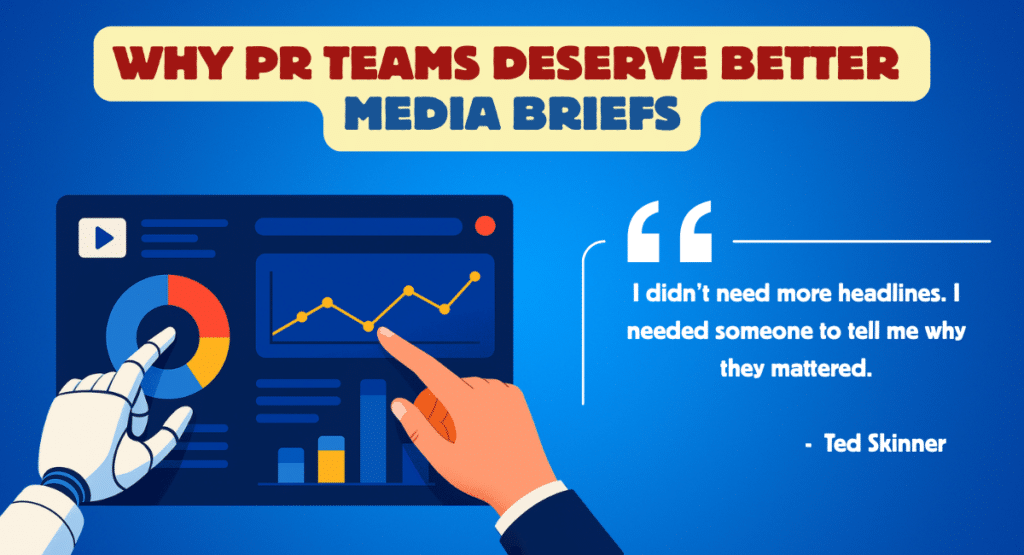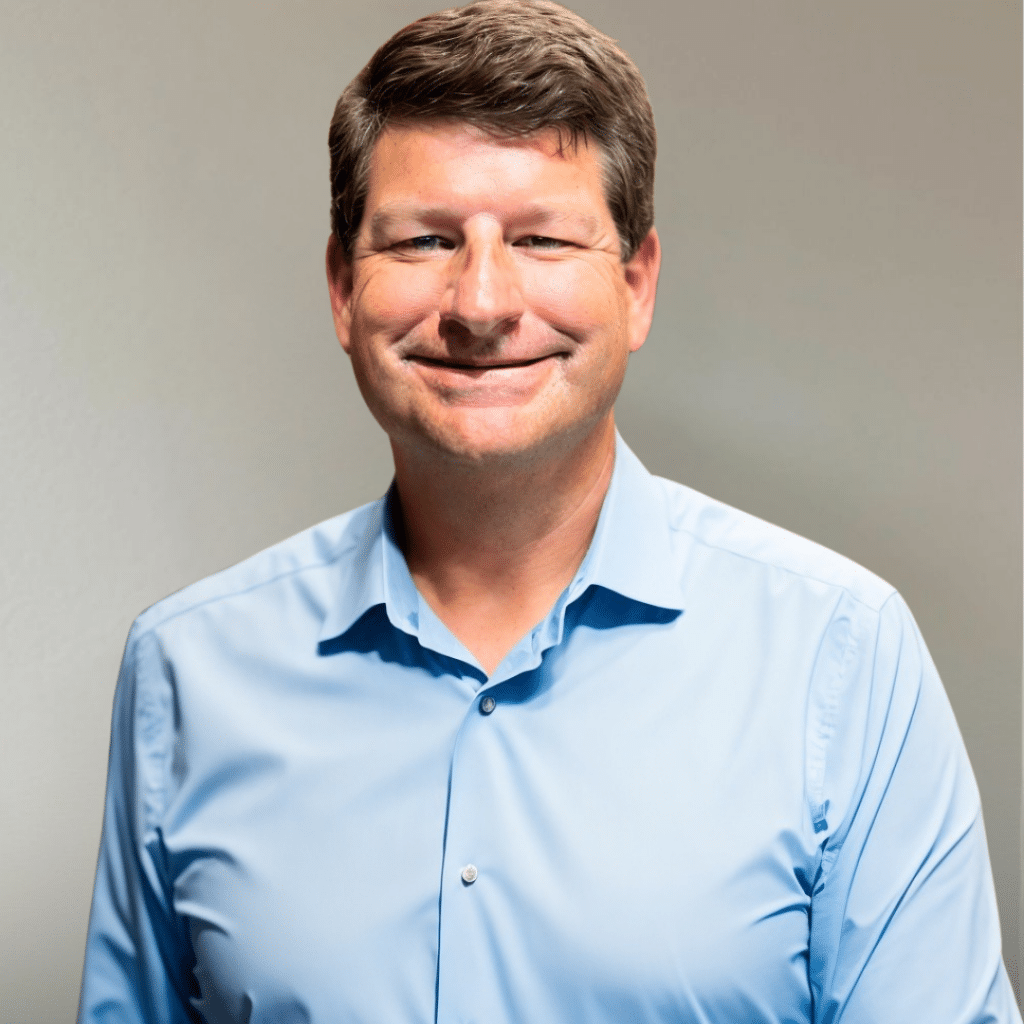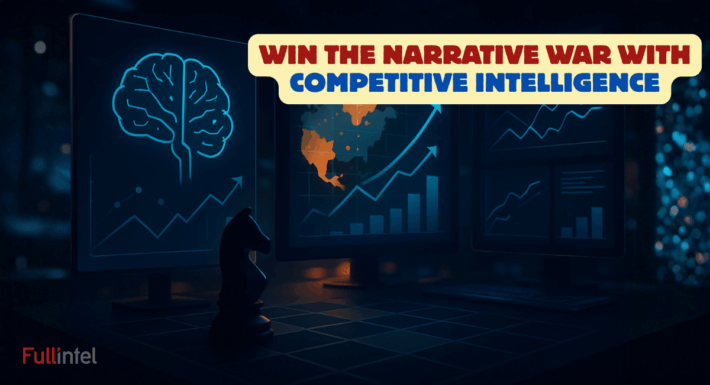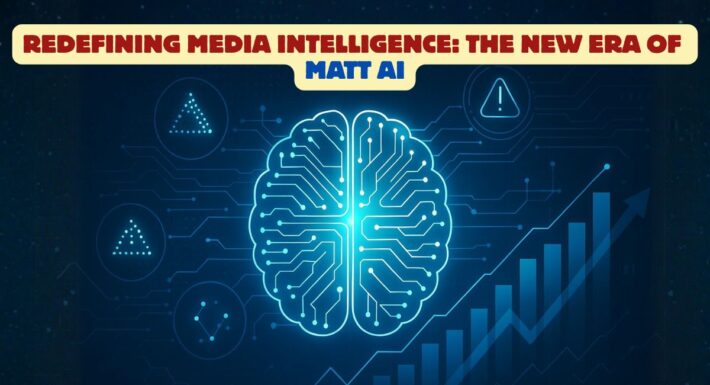How I Ditched My Morning Media Monitoring Headaches—And Why PR Pros Deserve the Same

There’s a moment every morning—about fifteen seconds after my alarm blares and just before the first coffee hits—when I brace myself for the daily news firehose. If you’re a PR pro, you know what I’m talking about: the ritualistic doom-scroll, the desperate hunt for signals in the noise, the endless clicking, saving, flagging, and muttering, “Does anyone on my team actually care about this headline?”
This was my routine. Every. Single. Day.
Until I realized it was broken.
I’m Ted Skinner, and for years, I thought I had to “do it all” when it came to monitoring the media for my clients and leadership team. Maybe you can relate. The stakes for PR teams are real—miss a trending story, a critical mention, or a sudden crisis, and it’s your reputation (and your client’s) on the line. Yet, the old way of human-curated morning reports—scrambling through sources, skimming alerts, pasting links into emails—was more pain than progress. So, what changed? Enter Fullintel. But before I get there, let’s rewind.
The Old Morning: Death by Aggregator
Let’s call it what it was: a grind.
I’d get up, grab the laptop, and start cycling through Google Alerts, TweetDeck, subscription feeds, and whatever my legacy media monitoring vendor decided was “newsworthy” that morning. I’d see irrelevant hits from halfway around the world, miss paywalled must-reads, and get fifty LinkedIn alerts about competitors’ interns switching jobs.
I built spreadsheets, dashboards, and even a couple of Slack bots, but I still felt behind. It was a lot of effort for very little insight. Worse, it was all on me—one human trying to out-scroll the internet.
It didn’t matter how many times I tuned my keywords or begged my monitoring service for better curation. The information overload was real, and real insights were rare. My mornings were a blur of tab-switching and caffeine consumption, all in the name of “staying on top of it.”
Why Most Media Monitoring Solutions Fall Short
Here’s the ugly truth most PR tech vendors won’t tell you:
Automated monitoring is cheap and easy to scale, but it’s not smart. Algorithms don’t know which mentions will derail your CEO’s day or which industry blog is actually moving the market. They pull in everything, and it’s still up to you to sift through it. That’s why many PR teams are moving away from DIY media monitoring in favor of more curated and contextual approaches.
The other approach, outsourcing to an agency or hiring junior staff, just changes who does the grunt work. The results are the same: it’s a patchwork of partial coverage, shallow context, and missed opportunities.
But it doesn’t have to be this way.
Discovering Fullintel: A Different Approach to Media Intelligence
One day, a colleague said, “You have to talk to James Rubec at Fullintel. He gets it.” James isn’t your typical product specialist. He’s focused on building tools that make media monitoring not just faster, but smarter—and more human.
What’s different about Fullintel? The secret is in their hybrid model: fundamental analysts, empowered by real technology. The AI works in the background to pull the universe of coverage, flag trending topics, and spot anomalies. Then, humans step in to filter, prioritize, and explain.
I asked James to show me what this looks like. Instead of another “mention dump,” I got a brief I could actually read in three minutes—one that told me not just what happened but why it mattered. There was no fluff, no filler, no guessing. It was curated, contextual, and action-ready.
And then I talked to Angela Dwyer, Fullintel’s Head of Insights. She explained how their team takes it further:
- They bring in paywalled and obscure sources that algorithms miss
- They offer honest sentiment analysis, flagging what’s really negative (not just a red “!” in a dashboard)
- They add executive summaries and industry context—actual insights, not just data points
- They track coverage over time, so you know when a story is fading or about to explode
It was, simply, what I had been trying to build on my own for years—only better, and delivered before my second coffee.
How the Award-Winning Fullintel Approach Works in Practice
Let me break down what’s actually different when you use a service like Fullintel:
You stop being a digital janitor: No more wading through a hundred junk hits to find the three that matter. The analyst team does the heavy lifting and tells you what to care about, why, and what to do next.
No more “breaking news FOMO”: Their PredictiveAI™ platform scans for stories gaining traction. You’re alerted before things blow up, not after.
All channels covered: Social, broadcast, print, digital, paywall, niche industry publications—if it matters to your brand, it’s in your brief.
It’s actually tailored: You want a one-pager with just the top risks? Done. You need a deep dive for the board? You’ll have it. It’s all delivered in your format—email, PDF, even Slack or Teams.
Analysts are partners, not just vendors: I’ve had honest conversations with their team about why a story is important or how to brief my executives. That level of support is rare in the vendor world.
What Effective Media Briefings Really Look Like
Imagine this: you open your inbox at 7:00 AM and find a crisp, clearly organized summary of every major story, risk, and opportunity—top-line bullets, sentiment, trending issues, and—crucially—what’s not worth worrying about. This is what streamlined executive news briefings should deliver every morning.
You forward it to your leadership team. Your CEO replies, “Thanks, this is actually useful.” Your team stops sending you links because they know you’ve already seen the signal, not just the noise.
That’s not a fantasy. That’s what a human-curated, tech-empowered media intelligence brief can be.
The Real Impact for PR Teams
Let’s get real:
When you don’t spend two hours wrestling your inbox, you reclaim time to do what matters—strategy, storytelling, and actual public relations. You have the bandwidth to jump on opportunities, manage crises, and confidently brief your stakeholders.
For larger teams, this means alignment. Everyone starts their day with the same facts, context, and priorities. There’s no more “Did you see this?” ping-pong. The focus shifts from gathering to acting.
For smaller teams or solo practitioners, it’s like adding another team member without the management overhead. You get the expertise and coverage of a newsroom, but with the accountability and partnership you need for a media intelligence partner.
Why Human Analysis Remains Essential in 2025
Yes, AI is incredible. But machines can’t replace nuance. They don’t know that an offhand tweet from an obscure analyst can turn into a Wall Street Journal feature—or that a local paper’s angry op-ed could trigger a regulatory inquiry. That’s where smart social media monitoring becomes essential—not just to track conversations but also to understand which ones could evolve into reputational risks.
Human analysts know the difference. They connect dots, challenge assumptions, and flag subtle shifts in narrative that a bot will always miss. In a crisis, this can be the difference between a proactive response and playing catch-up.
And when do you need to show ROI? Fullintel gives you data that tells a story—volume, reach, sentiment, and real business impact—not just charts for the sake of charts.
My Transition Experience: No Going Back
Was it easy to let go of my old ways? Honestly, I was skeptical. Letting someone else “drive” my daily brief felt risky at first. But the first week I tried Fullintel, I realized what I’d been missing: clarity, confidence, and control. I wasn’t less informed—I was better informed.
Now, my mornings are mine again. I get to focus on the work that actually moves the needle, not the endless hunt for what matters. My team is happier, my leadership is impressed, and I’m spending less time worrying and more time leading.
The Bottom Line for PR Professionals
If you’re still cobbling together your morning brief, there’s a better way. Fullintel delivers the kind of human-curated, tech-enhanced intelligence you wish you’d had years ago, exactly the kind of comprehensive media intelligence solutions that modern PR teams need to stay ahead.
- You get coverage you can trust, analysis you can use, and more hours back in your day.
- It’s not just about saving time—it’s about elevating the impact of your work.
Ready to Transform Your Media Monitoring?
You don’t have to take my word for it. Talk to James Rubec about how media monitoring can actually work for you. Ask Angela Dwyer how their analysts turn noise into insight. Try a demo, challenge them with your specific industry needs, and see what they can do.
Let’s make mornings work for PR pros again.
You deserve more than just a news dump. You deserve a partner.
Find out more at fullintel.com.
And if you’re ready to say goodbye to media monitoring misery, you know where to find me.

Ted Skinner
Ted Skinner is a seasoned executive in the media intelligence industry, with a career spanning several decades. In the mid-1990s, he played a pivotal role at eWatch, one of the pioneering internet monitoring startups. At eWatch, Skinner was instrumental in developing early online media monitoring tools, which scanned online publications, forums, and mailing lists to help corporations manage their digital reputations. His work at eWatch laid the groundwork for modern media intelligence practices.
Currently, Skinner is Vice President of Marketing with Fullintel, a company specializing in media monitoring and PR analysis services. His extensive experience and contributions have significantly shaped the media intelligence landscape, making him a respected figure among public relations professionals.
Ted Skinner is the VP of Marketing at Fullintel with extensive experience in AI implementation for public relations and media monitoring. A recognized expert in crisis communication strategy and competitive intelligence, Ted specializes in developing practical applications for AI in PR workflows. His thought leadership focuses on helping PR professionals leverage technology to enhance strategic communications while maintaining the human insight that drives successful media relations.
Read more of Ted’s insights on AI-powered PR strategies and follow his latest thinking on modern measurement approaches.



